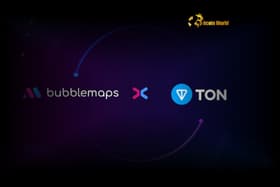Binance Shifts to Secondary Listings: How Binance Wallet is Redefining Token Launches
0
0

Instead of directly listing tokens on the Binance exchange as before, Binance has recently implemented a new method through Binance Wallet.
Accordingly, the exchange has shifted from large-scale initial token offerings to a secondary listing model after hosting Token Generation Events (TGEs) through Binance Wallet.
The Secondary Listing Model
So far this year, five projects have been publicly launched on Binance Wallet. It facilitated the sales of projects, including Particle Network (PARTI), Bedrock (BR), and Bubblemaps (BMT).
It appears that Binance is reducing the direct listing of projects it deems to have potential. Instead, it is adopting a secondary listing model through other components within its ecosystem.
“Binance has pivoted away from doing huge initial launches with big Day-1 selling pressure, while doing more secondary listing shortly after running TGE campaign on Binance Wallet,” a user on X observed.
Binance does not list the tokens immediately after the TGE phase amid the selling pressure. Instead, it allows users to sell first on Binance Wallet, PancakeSwap, or other centralized exchanges (CEXs). This ensures that Binance users who did not participate in the TGE are not affected by price drops.
Finally, Binance can list the token when its valuation is lower, and selling pressure has decreased. Projects with strong capital may have already bought back their tokens at a low price, and at this point, the listing can create a new wave of price increases.
The impressive performance of these projects after TGE triggers a FOMO (Fear of Missing Out) effect, bringing numerous benefits to Binance’s ecosystem. This includes increasing the Total Value Locked (TVL) on the BNB Chain as new assets are issued, attracting new users to the Binance Wallet, and boosting demand for BNB purchases.
X user Ahboyash commented that the token sale on Binance Wallet is part of a 4-stage strategy for new projects. The ultimate goal of this strategy is to list on Binance Futures and eventually aim for a Binance Spot listing.
The user also cited MyShell as an example. The project conducted its TGE Offering on Binance Wallet, then listed on Binance Alpha, and finally achieved a Binance Spot listing.
Impressive Performance of Binance Wallet TGE Projects
Thanks to this secondary listing model, projects conducting TGEs through Binance Wallet have shown strong performance. Data from icoanalytics indicates that all five projects launched via Binance Wallet in 2025 have achieved ROI ranging from 2.3x to 14.7x, outperforming projects on Binance Alpha.
This strategy has effectively reduced users’ risk and optimized the benefits for Binance ecosystem components, including BNB Chain and Wallet. As a result, Binance Wallet’s daily trading volume surged to $90.5 million on March 18. This represented a 24x increase from early March.
However, users on other CEXs may experience losses due to initial selling pressure. Additionally, if a project fails to develop successfully, both Binance and investors could face negative consequences.
0
0
 Manage all your crypto, NFT and DeFi from one place
Manage all your crypto, NFT and DeFi from one placeSecurely connect the portfolio you’re using to start.







